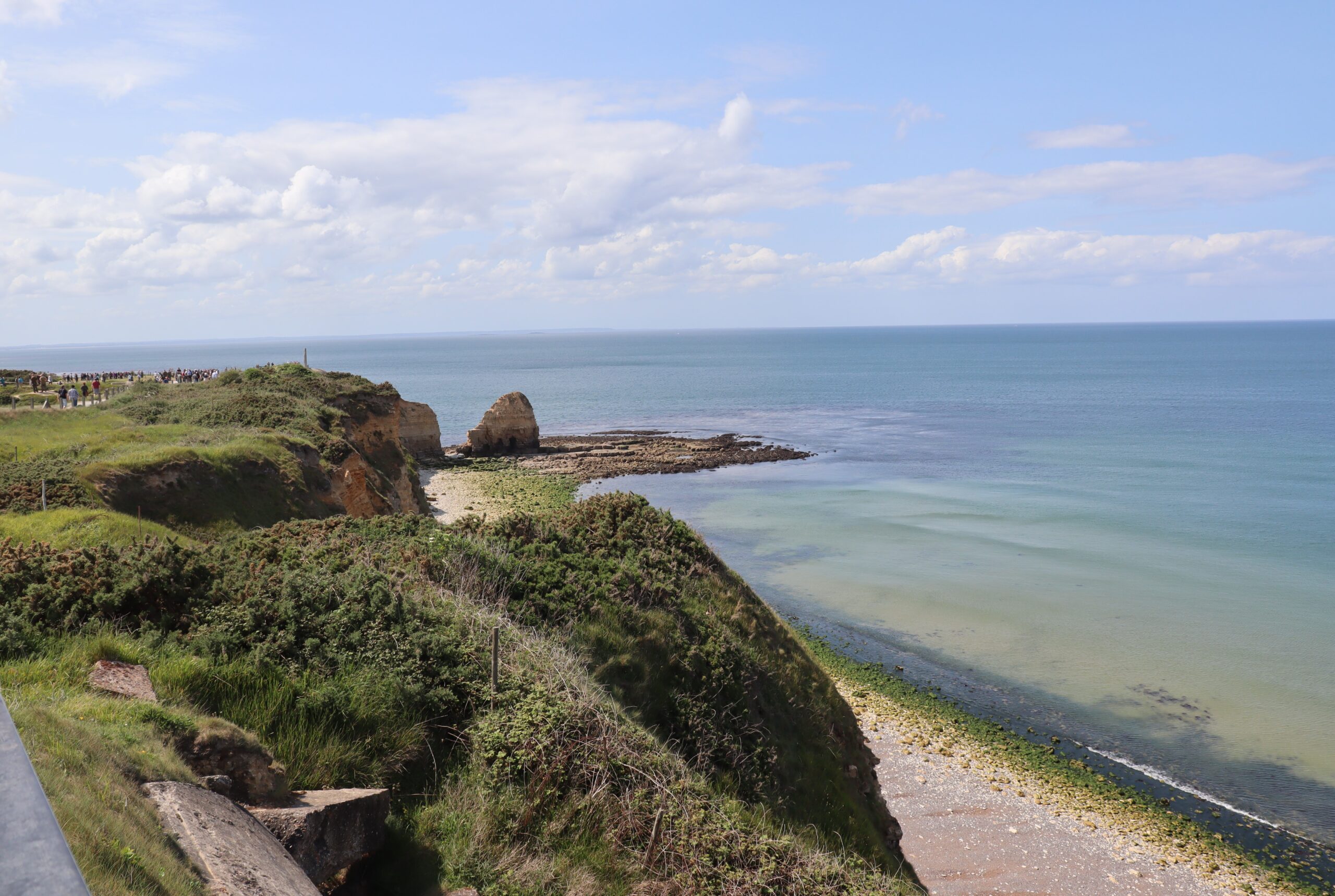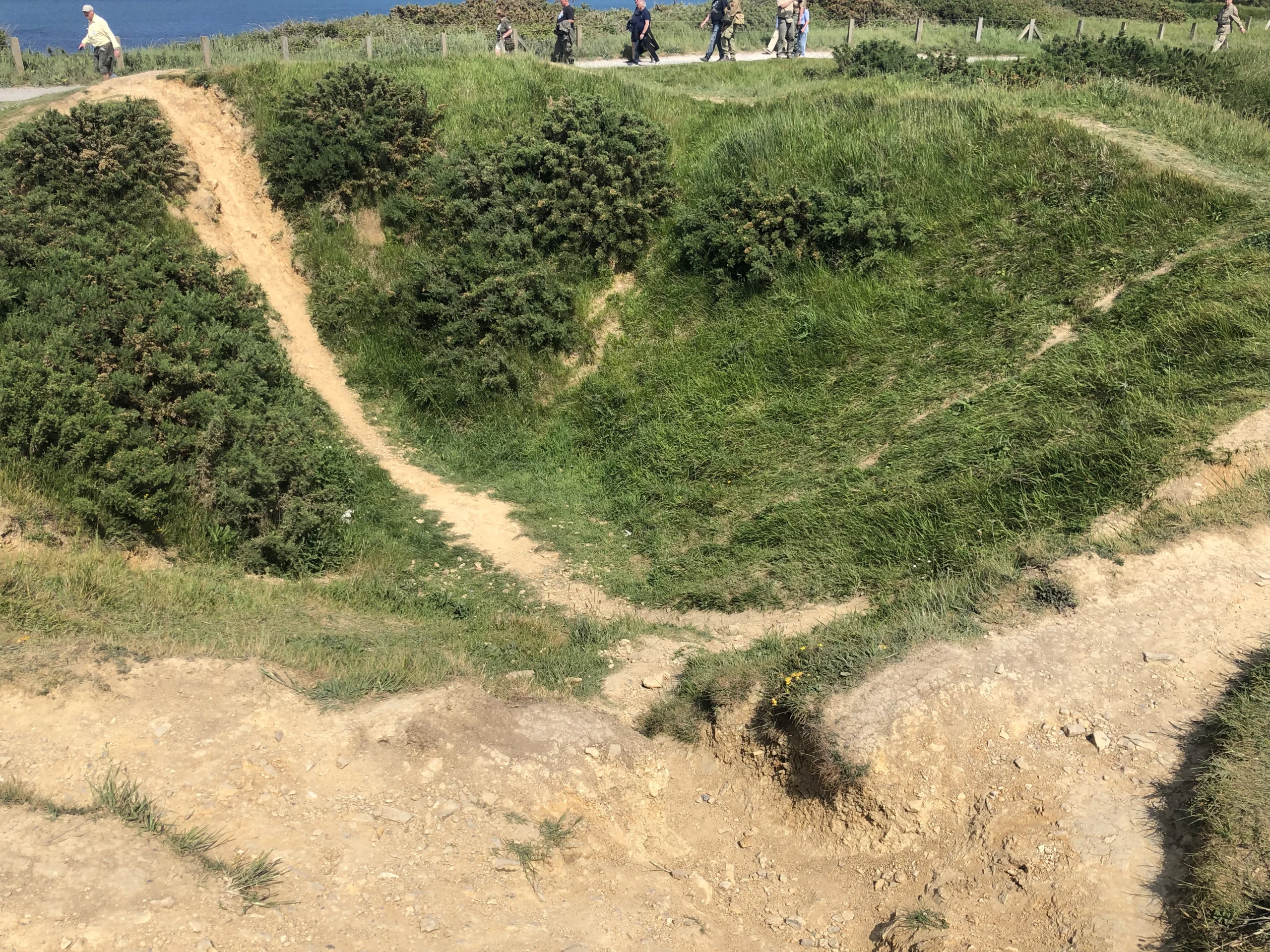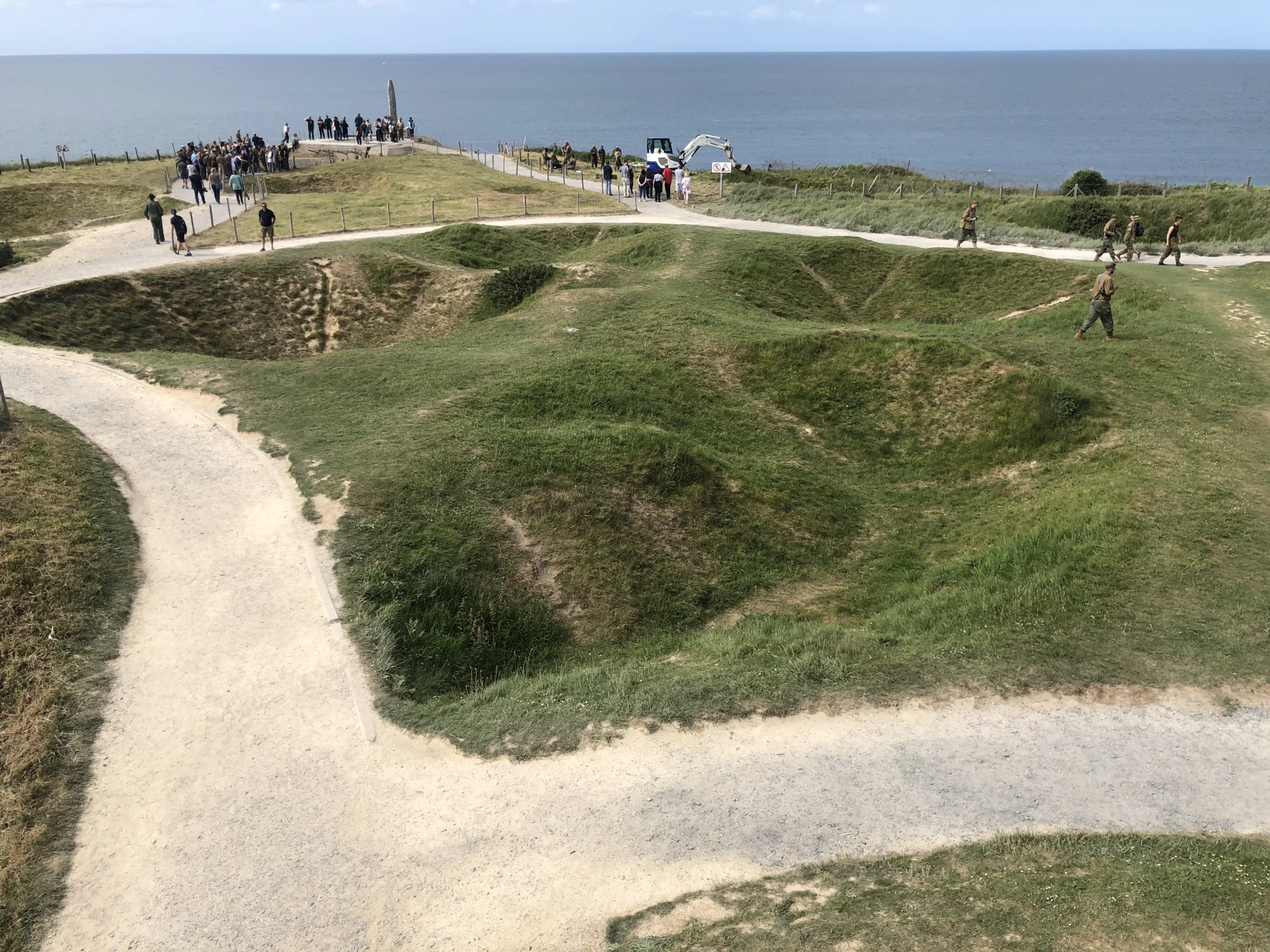D-Day
Battleship Texas: Bombarding Normandy
Eighty years later, the Battleship TEXAS, the last remaining battleship to participate in the landings at Normandy, reminds us of the great sacrifices made by those who took part in the largest amphibious invasion of Europe.
Knock that damned Hitler out of the war. Yours is the job and you are the men that the United States is going to be proud of.General Dwight D. Eisenhower
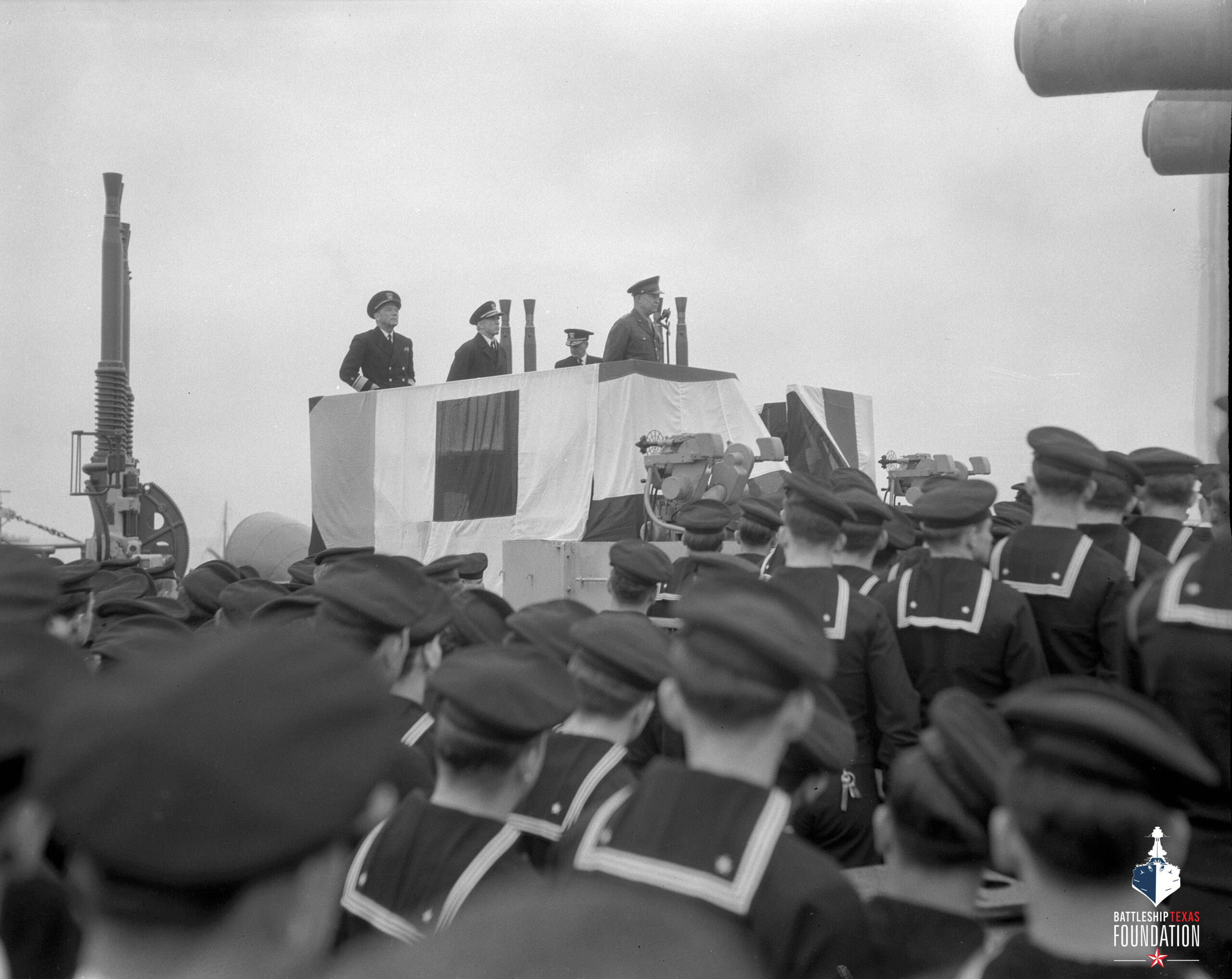
Underway from Belfast Lough on June 3rd, 1944, the USS TEXAS set course for Baie de la Seine, France, but due to the postponement of the invasion on June 4th, the ship would reverse course for ten hours. Following the delay, the ship was headed to a predesignated bombardment position via mine-swept fire support channels off the coast of France. Swift tidal currents affected navigation, and dimly lit channel buoys, markers laid to designate the mine-swept travel lanes, created uncertainty, and caused delay in locating the channel entrances.
On June 6 after the H.M.S. MELBREAK identified the channel entrance, TEXAS navigated to the Omaha Beach transport area without incident, proceeding down the western fire support channel, stopping to anchor briefly. Using radar as a navigational aid, the ship began moving towards its assigned fire support position at 4:45 am in preparation for a scheduled shore bombardment just an hour away.
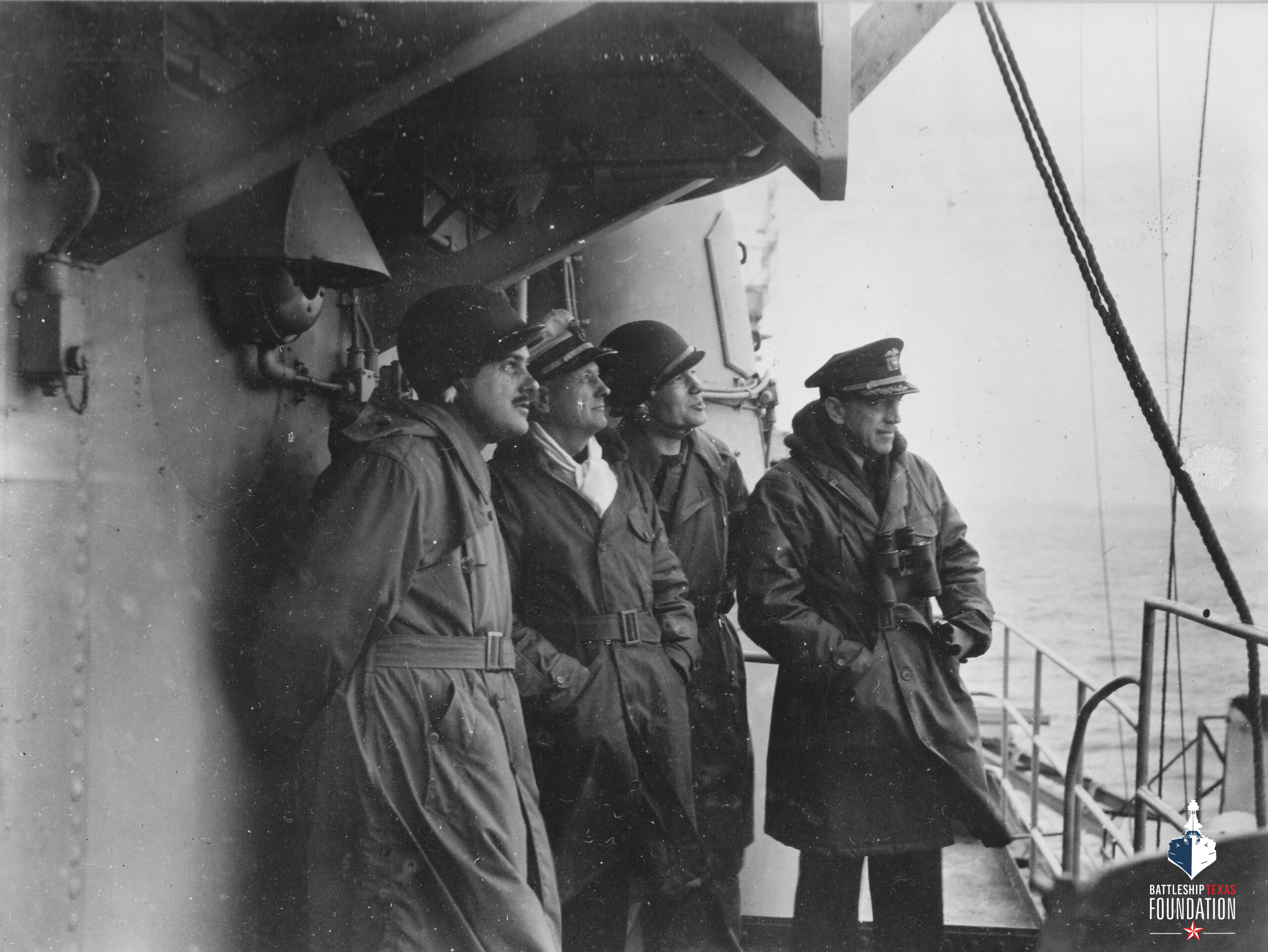
Those of our troops who were not wax-gray with seasickness, fighting it off, trying to hold onto themselves before they had to grab for the steel side of the boat, were watching the Texas with looks of surprise and happiness. Under the steel helmets they looked like pikemen of the Middle Ages to whose aid in battle had suddenly come some strange and unbelievable monster. There would be a flash like a blast furnace from the 14-inch guns of the Texas, that would lick far out from the ship. Then the yellow-brown smoke would cloud out and, with the smoke still rolling, the concussion and the report would hit us, jarring the men’s helmets. It struck your near ear like a punch with a heavy, dry glove.Ernest Hemingway
Now thirteen-thousand yards off the French coast, the guns took aim at Pointe Du Hoe, the vessel’s primary bombardment target. Commencing fire at 5:50 am, two hundred and fifty-five 14”/45 caliber shells were fired at multiple ground installations, including casemates, gun emplacements, pillboxes, and underground tunnels, with devastating effect. The ship’s spotter aircraft at the time, the British-made Spitfire airplane manned by American naval aviators, reported several hits on the emplacements. The area was effectively neutralized, and several craters from this bombardment are still visible today.
As the sky lightened, the armada became visible. The smoking and burning French shoreline also became more defined. At 0600, the huge guns of the Allied navies opened up with what must have been one of the greatest artillery barrages ever. The diesels on board our craft failed to muffle the tornadic blasting. I could see the TEXAS firing broadside into the coastline. Boom-ba-ba-boom-ba-ba-boom! Within minutes, giant swells from the recoil of those guns nearly swamped us and added to the seasickness and misery. But one could also actually see the two-thousand-pound missiles tumbling on their targets.Sgt Robert Bixler, 116th Infantry Regiment, 29th Infantry Division
Shifting targets at 6:26 am, seventeen more 14”/45 caliber rounds were fired in just four short minutes, ceasing all bombardment fire at 6:30 am while allied forces began landing on the beaches. For the remainder of the day, the ship continued to fire on targets of opportunity, such as machine gun and mortar positions, field batteries, troop emplacements, and ammunition depots. The last fire mission on enemy vehicles came at 8:45 pm and lasted until 9:09 pm, resulting in effective fire and several hits recorded. Just under seven hundred shells were fired into northern France, leading to a successful shore bombardment, allowing Allied forces to make headway in the liberation of Europe.
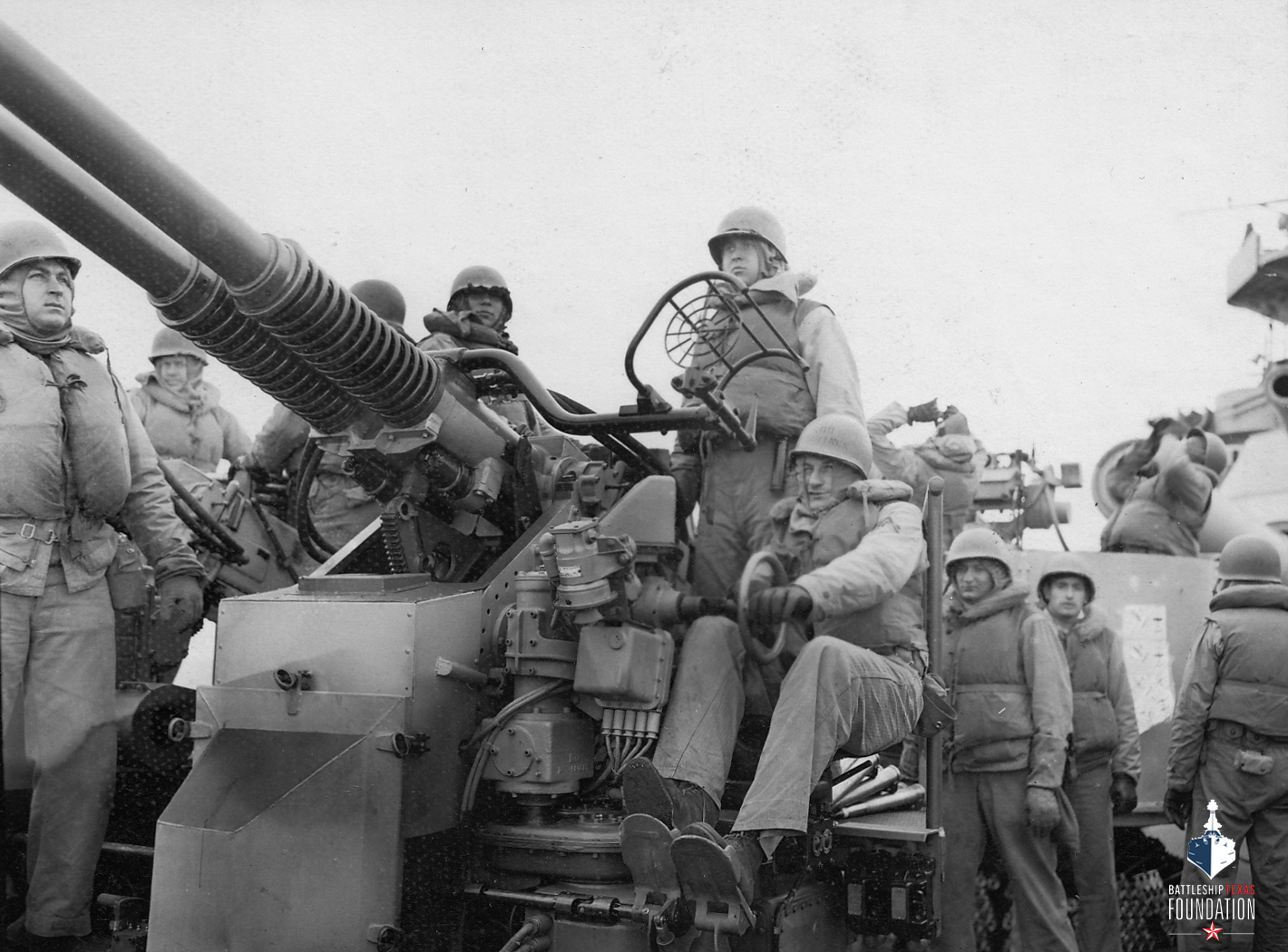
The ramp was lowered immediately after the rockets fired. It was our hope and desire to run right up on the beach for a dry landing, not because we were afraid of getting wet but because if we were soaked it would be added weight to carry while climbing. The British Navy man had promised to put us down dry, but suddenly we ran aground with the ramp dropped. The officer said, ‘Everybody out.’ Looking ahead, I could see fifteen or twenty feet of water, a muddy dirty gray stretch. The Entire area was marked by craters, shell holes from the guns on the TEXAS and the bombers.Lt. George Kerchner, 2nd Ranger Battalion

